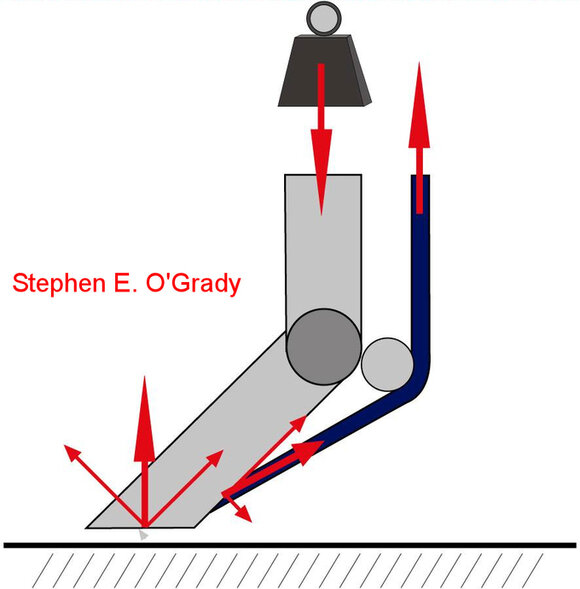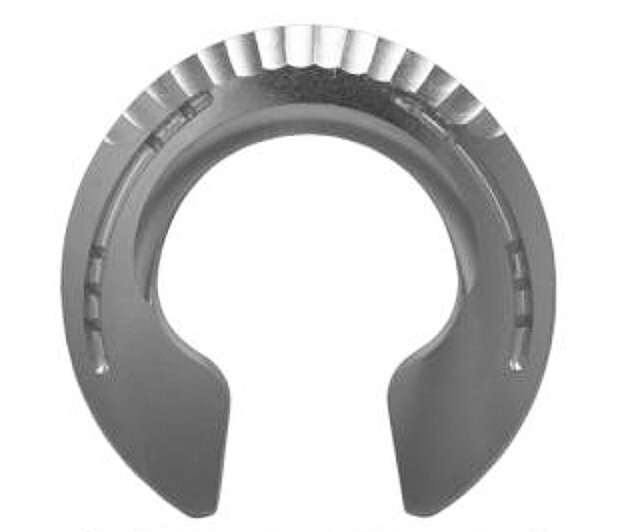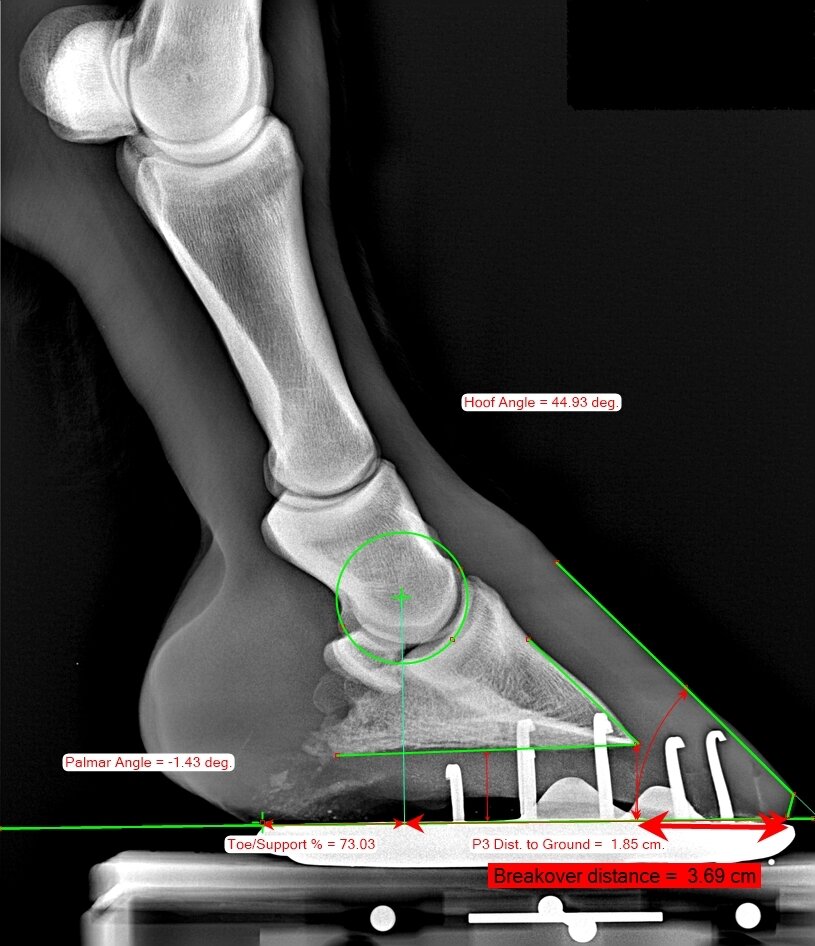Farrier Consultations and Foot Balance
Farrier Consultations and Foot Balance Evaluations
Evaluating hoof balance, making recommendations and discussing options related to factors that could help a soundness issue by promoting improved movement while trying to balance such factors as a farrier’s intent, the discipline a horse competes in and the sometimes tricky environmental situations can make the whole process quite difficult - some would say a minefield. When possible I would like to avoid controversy, so the plan is to try and objectively evaluate a horse, it’s feet and shoeing plan as well as to work cooperatively with the farrier and owner.
In the process of trying to diagnose and treat a lameness, a collaborative relationship with a farrier is essential. There are times when a change in shoeing will be integral to improving a horse's soundness. Fortunately we have a number of experienced farriers in our area that have been great to work with over the years. The practice of farriery is truly a fascinating blend of art and science. How one farrier approaches one issue may be different from another yet the results can be the same.
The idea of farrier consultations has grown out of the use of digital x-rays in the practice. By being able to take the radiograph with the farrier present, we can see what is currently there and make recommendations on the spot. This is especially valuable with founder cases and other causes of foot soreness. When we can't all be together the digital x-rays can easily be emailed directly along with measurements and suggestions.
In certain situations it’s obvious that changes need to take place:
Dorsal hoof wall cracks in feet that are too long with low heels.
Long toe-under run heel foot configuration is one of the most important and common foot abnormalities facing the horse industry today. This type of foot conformation is so common that it is often thought to be within normal limits for many; most commonly seen with thoroughbred racehorses.. The long toe-under run heel has been defined as occurring when the angle of the heel is 5 or more degrees lower than the angle of the toe, alternatively it’s when the heels are growing more diagonally such that the back part of the foot is unsupported. It is often accompanied by a broken-back hoof pastern axis.
In Figure 2 below, the line on the front of the foot indicates a preferred alignment vs the one with Figure 3 on the right, indicating that the line represents a pushed back or what’s commonly known as a broken back axis. In this simple diagram if we are faced with that and unable to trim the foot to a better alignment shoes and pads would likely be used to increase the heel angle
Normal foot
Foot demonstrating a broken back axis.
There are many forces that affect the hoof angle, how it appears at rest and how it responds to movement. if you enjoy physics this could be your calling as considering these factors along with a horse’s conformation, environment, footing that he or she works in and the type of discipline are all factors.
The weight at the top indicates the weight of the horse coming down the leg onto the cannon bone (light blue rectangle). The dark blue indicates the flexor tendons that are under constant tension, but this increases as the weight increases and as the length of toe increases. Both of these things will cause the fetlock (large blue-gray circle) to drop more.
So from here there are a myriad of options. Perhaps the goal is to provide heel support, all 3 of these bar shoes will do that and there are still other approaches that are valid:
Bar shoe
Heart Bar shoe
Egg Bar shoe with a full pad
All of these bar shoes could have a role in working with horses that have a low hoof angle and in need of more palmar or heel support. Sometimes a shoe that works with one horse may not work with another with a similar situation. Why is that? Well it would be too easy if all horses responded the same, instead they need to be evaluated and worked with as individuals. There may be medical, conformational and/or environmental factors that affect a shoeing recommendation. Beyond that there are farriers that have different experiences managing certain horses and have their own approach to managing a particular condition. In all cases the trim is the most important aspect of working with the hooves.
Example of a Natural Balance Shoe. This type of shoe can be particularly useful for a variety of conditions.
A Natural Balance Shoe is quite different in appearance and in the way that is applied to the foot. Depending on the particular farrier and the conditions that we are working with this type of shoeing may be preferable to using a bar shoe or another open heeled shoe.
An Onion Heel shoe
An Onion Heel shoe, one that is wider through the quarters and the heels, very nicely provides heel support and this would be most noticeably observed in softer footing where it will “float” more on that surface vs sinking as most shoes would and/or have a neutral effect on a hard surface.
My goal is to try and identify the issues then work with a farrier to come up with a plan. There are times that what we start out doing is very different from what the horse may need in 6-12 months. Radiographs frequently help as trying to get a sense of hoof is much easier when we can visualize the relationship between the the bones, hoof and ground surface.
Hoof Balance Evaluations and Farrier Consultations
This aspect of the practice evolved over time as we have all looked at farriery as not just the act of getting a horse shod, but rather an effort to regularly have the feet trimmed and balanced then, if shod, choose a shoeing approach that will support the horse in its daily work whether this is as a pleasure horse or competition horse. At times we are trying to correct an imbalance, come up with a “shoeing prescription” that may help with a soundness condition, improve motion and/or just answering the question of if there are changes that should be made and giving all parties a better way to objectively evaluate the foot.
The following pictures demonstrate radiographs that I might normally do along with annotations and measurements that would be sent back to an owner and their farrier. These are lateral or side views of a forefoot:
Radiographs were taken after I diagnosed a lameness with that foot through an exam including nerve blocks and found sensitivity when checking the foot with hoof testers. His use was light ring work walk-trot-canter plus riding on roads and trails. Using some objective information the following was discussed with the farrier:
“In the forefoot on the LM views he has a negative PA that I feel is contributing to the problem along with a longer breakover than is ideal. Both Toe/Support% numbers are high reflecting how much foot is anterior to the Center of Rotation (COR) or Point of Rotation (POR). To me, it looks like we need to increase the PA by 1.5-2,0 degrees just to get to a level position and from there he’ll likely need another degree to alleviate some of the stress on the Deep Digital Flexor Tendon (DDF) and navicular bone. In addition setting the shoe back from the toe and rolling, as you often do, should help w/ the breakover.”
This information is based on measurements of feet that are considered to have normal ranges:
hoof wall thickness (proximal/distal) = (<2.2 cm normal)
sole thickness (toe/heel) = (> 1.2 cm good, > 1.5 cm better)
hoof wall angle (DHW) = (compare to pastern angle and other foot)
heel angle/Palmar Angle (PA) = (+2 to +8 degrees normal)
point of rotation or Toe/Support % = (normal = 50-67%)
Measured lateromedial view (L-M). Quantitative assessment of the horse's foot. A, dorsal hoof wall length (DHWL); B, dorsal hoof wall angle (DHWA); C and C, H-L zone, dorsal hoof wall thickness (DHWT); D, coronet to extensor distance (CED); E, solar angle (SA); F, sole depth (SD); G, heel angle (HA); H, toe-to-foot ratio (T:F). B, Measured horizontal dorsopalmar view (HD-P). Quantitative assessment of the horse's foot. A, lateral hoof wall length (LHWL); B, medial hoof wall length (MHWL); C, lateral P3 height (LP3H); D, medial P3 height (MP3H); E, lateral hoof wall angle (LHWA); F, medial hoof wall angle (MHWA); G, median angle (MA)
Discussing Toe/Support % may well be the most important factor as this refers to the amount of toe relative to the whole foot. On this horse 73.03% easily exceeds the higher end of the range and gives a sense of the forces working against this horse as he breaks over or moves his foot from the standing phase to starting to move off the ground. Since 73% of his foot is anterior to the POR or COR there would be more effort to move this foot forward than would a horse with a lower Toe/Support % and toe length. This means that as we lower the % closer to 50% we improve the horse’s ability to breakover or move forward off the foot more easily. This is accomplished by shortening up the toe length and allowing the breakover to occur earlier when the foot leaves the ground. So if we split the difference from the tip of the coffin bone to the toe of the hoof this would back up that distance. Some of this can happen by simply trimming back the toe and the second part could happen by placing a rolled toe shoe back from toe of the hoof along with modifications with the heel.
The following two pictures demonstrate Dorso-Palmar (DP) radiographs that evaluate the foot from front to back.
In these views the measurements indicate only a very slight medial-lateral imbalance, one that would be resolved easily by a light rasping of the minimally higher lateral side. More importantly though the foot is displaced more laterally such that there’s unequal weight bearing occurring through the joints and the foot. Addressing the imbalance and placing a shoe to compensate for the alignment issue, this can all be improved.
All of these evaluations are done frequently and are incorporated with all soundness evaluations where the feet are considered a factor.
Working With a Laminitic Horse
There are three radiographs in this study that will demonstrate how a foot can change quite dramatically over a 10 month period. The horse had a history of Cushing's Disease and Insulin Resistance and despite attempts to manage these conditions with medications and dietary modifications the patient still had laminitic episodes. Fortunately the outcome was successful, largely because of the farrier work, the client’s willingness to modify the diet and our ability to manage this case as a team.
Throughout the radiographs you will see lines drawn to measure distance of the coffin bone relative to the hoof wall and to the sole as well as angles demonstrating displacement of the coffin bone relative to the dorsal hoof wall.
November 2007 - early signs of laminitis with rotation evident with coffin bone measuring 8 degrees away from the Dorsal Hoof Wall. In addition the normal measurement between the DHW and the coffin bone of 2.2 cm that evaluates the laminae indicates stretching at 2.6 cm.
In May of 2008 this radiograph shows the result of more rotation, now 14 degrees and more laminae stretching at 3.4 cm.
Same foot after trimming and shoeing based on the radiographs in September 2008.
The above horse did quite well with these changes and went from being significantly lame to comfortably moving around with no anti-inflammatories. Of course, not all necessarily are this successful, nor do all of them follow a straight trajectory especially when dealing with laminitis. The key is early intervention, attempting to identify the causative factors, treating and managing the horse accordingly and working collaboratively with the farrier.


















